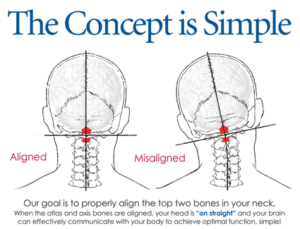Mal de debarquement (MDD) is a rare and poorly understood disorder of the vestibular system that results in a phantom perception of self- motion typically described as rocking, bobbing or swaying. The symptoms tend to be exacerbated when a patient is not moving, for example, when sleeping or standing still.
When you head out to sea on a cruise ship, your brain and body have to get used to the constant motion. It’s called “getting your sea legs,” and it keeps you from crashing into a wall every time the ship bobs up or down.
When you get back on shore, you need time to get your land legs back. That usually happens within a few minutes or hours, but it can take up to 2 days. With mal de debarquement syndrome, though, you can’t shake the feeling that you’re still on the boat. That’s French for “sickness of disembarkment.” You feel like you’re rocking or swaying even though you’re not.
It can happen to anyone, but it’s much more common in women ages 30 to 60. It’s not clear if hormones play a role.
People who get migraines may be more likely to get it, too, but doctors aren’t sure how the two conditions are linked.
What Are the Symptoms?
Mainly, you feel like you’re rocking, swaying, or bobbing when there’s no reason for it. You might feel unsteady and even stagger a bit.
Other symptoms include:
- Anxiety
- Confusion
- Depression
- Feeling very tired
- Having a hard time focusing
- Nausea
Your symptoms may go away when you ride in a car or train, but they’ll come back when you stop moving. And they can get worse with:
- Being in a closed-in space
- Fast movement
- Flickering lights
- Stress
- Tiredness
- Trying to be still, like when you’re going to sleep
- Intense visual activity, like playing video games
What Causes It?
It happens most often after you’ve been out on the ocean, but riding in planes, trains, and cars can lead to it, too. It’s even been caused by water beds, elevators, walking on docks, and using virtual reality.
While almost any kind of motion can cause it, doctors don’t know what’s really behind it. In most cases, you get it after a longer trip. But there’s no tie between the length of your trip and how bad the symptoms are or how long they last.
In trying to diagnose this condition through ruling out other problems since no one test diagnoses this condition. It’s a rare condition, so it may take a few visits to figure it out. Your doctor probably will want to rule out other causes for your symptoms with things like:
- Blood tests
- A hearing exam
- Imaging scans of your brain
- An exam that makes sure your nervous system is working the way it should
- An exam to test your vestibular system, which keeps you balanced and steady
If you’ve had the symptoms for more than a month and the tests don’t turn up any reason for them, your doctor may tell you that you have mal de debarquement syndrome.
How Is It Treated?
It’s a hard condition to treat — no one thing works every time. It often goes away on its own within a year. That’s more common the younger you are.
A few things your doctor might recommend include:
4-Taking care of yourself. Exercise, managing stress, and getting rest may give you some relief.
Can You Prevent It?
There’s no sure way. If you’ve had mal de debarquement syndrome before, it’s probably best to stay away from the type of motion that brought it on. If you can’t do that, check with your doctor to see if a medication might work for you.

